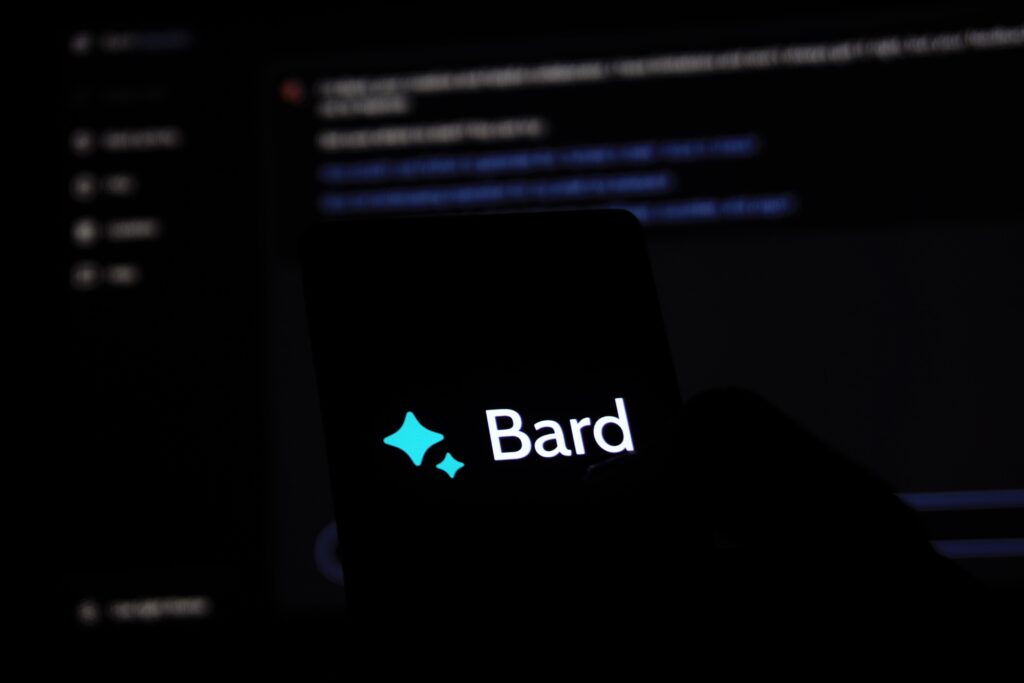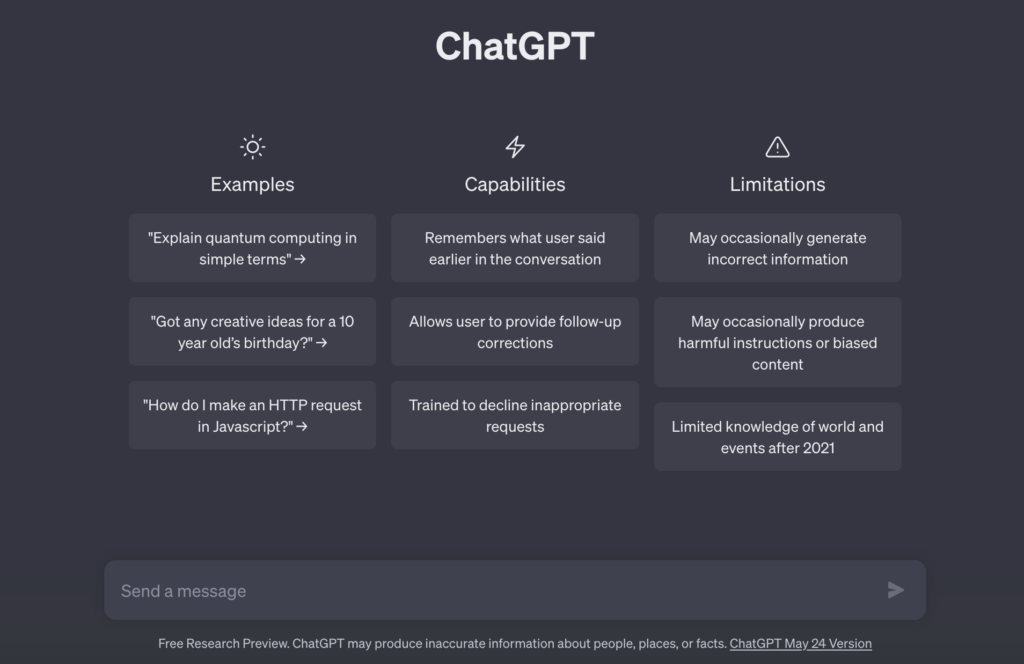What is Google Bard?
Google Bard is a large language model (LLM) chatbot developed by Google AI. It is based on the LaMDA family of LLMs and is trained on a massive dataset of text and code. Bard can generate text, translate languages, write different kinds of creative content, and answer your questions in an informative way. It is still under development, but it has learned to perform many kinds of tasks
- Following instructions and completing requests thoughtfully: Bard can follow your instructions and complete your requests thoughtfully. For example, if you ask Bard to write a poem about a cat, it will write a poem that is both creative and informative.
- Answering questions in a comprehensive and informative way: Bard can answer your questions in a comprehensive and informative way, even if they are open-ended, challenging, or strange. For example, if you ask Bard what the meaning of life is, it will give you a thoughtful and well-reasoned answer.
- Generating different creative text formats: Bard can generate different creative text formats, such as poems, code, scripts, musical pieces, e-mail, letters, etc. It will try its best to fulfill all your requirements, but don’t be surprised when it falls short in the creativity department.
Google Bard is still under development, but it has the potential to be a powerful tool for a variety of tasks. It could be used for education, research, and even entertainment. For example, Bard could be used to create personalized learning experiences for students, to help researchers find new insights in their data, or to write creative content for movies and TV shows.

Table of Contents
How to use Google Bard
Google Bard is currently available in beta. You can sign up for early access on the Google Bard website. Once you have signed up, you can start using Bard by typing in your requests or questions. Bard will then try its best to follow your instructions or answer your questions.
Here are some examples of how you can use Google Bard:
- Writing creative content: Bard can help you write creative content, such as poems, stories, and scripts. For example, you could ask Bard to write a poem about your favorite animal or to write a script for a short film.
- Translating languages: Bard can translate between languages. For example, you could ask Bard to translate a document from English to Spanish or to translate a conversation between two people who speak different languages.
- Answering questions: Bard can answer your questions in a comprehensive and informative way. For example, you could ask Bard what the capital of France is or to explain the theory of relativity.
The future of Google Bard
Google Bard is still under development, but it has the potential to be a powerful tool for a variety of tasks. It could be used for education, research, and even entertainment. In the future, Bard could be used to:
- Create personalized learning experiences: Bard could be used to create personalized learning experiences for students. Bard could understand the student’s individual needs and interests and then create learning materials that are tailored to the student’s specific needs.
- Help researchers find new insights in their data: Bard could be used to help researchers find new insights in their data. Bard could understand the data and then generate hypotheses and ideas that the researchers might not have thought of on their own.
- Write creative content for movies and TV shows: Bard could be used to write creative content for movies and TV shows. Bard could understand the story and characters and then generate dialogue, scenes, and even entire scripts.
Google Bard is a powerful new tool with the potential to change the way we interact with computers. It is still under development, but it is already clear that it has the potential to be a valuable tool for a variety of tasks.
What is the difference between Google Bard and OpenAI’s ChatGPT?
Google Bard and OpenAI’s ChatGPT are two of the most advanced large language models (LLMs) available today. They are both capable of generating text, translating languages, writing different kinds of creative content, and answering your questions in an informative way. However, there are some key differences between the two models.
One of the biggest differences is the size of the training dataset. Google Bard was trained on a dataset of text and code that is 100x larger than the dataset used to train ChatGPT. This means that Google Bard has a better understanding of the world and can generate more comprehensive and informative responses.

Another difference is the model architecture. Google Bard is a transformer-based model, while ChatGPT is a recurrent neural network (RNN)-based model. Transformers are a type of neural network that has been shown to be very effective for natural language processing tasks. This means that Google Bard is better at tasks that require understanding the context of a conversation, such as answering questions and generating creative text formats.
Finally, Google Bard is still under development, while ChatGPT has been available for public use for a longer period of time. This means that ChatGPT has been more thoroughly tested and is generally considered to be more reliable. However, Google Bard is still learning and improving, and it is possible that it will eventually surpass ChatGPT in terms of performance.
Overall, Google Bard and OpenAI’s ChatGPT are both powerful LLMs with their own strengths and weaknesses. The best model for you will depend on your specific needs and preferences.
I heard you liked tables?
| Feature | Google Bard | ChatGPT |
|---|---|---|
| Training dataset size | 100x larger | Smaller |
| Model architecture | Transformer-based | RNN-based |
| Performance | Better at understanding context | More reliable |
| Availability | Still under development | Publicly available |
Fine, have another table, how about the 10 most popular LLMs out there?
| LLM | Main Selling Points |
|---|---|
| Google Bard | Trained on a massive dataset of text and code, making it very comprehensive and informative. |
| OpenAI’s ChatGPT | One of the first LLMs to be made publicly available, and it is still considered to be one of the most reliable. |
| Jurassic-1 Jumbo | Trained on a dataset of 1.7TB of text and code, making it one of the largest LLMs available. |
| Megatron-Turing NLG | One of the most powerful LLMs available, capable of generating text that is indistinguishable from human-written text. |
| WuDao 2.0 | One of the most advanced LLMs available, capable of understanding and responding to complex questions and requests. |
| PaLM | Trained on a dataset of text and code from the internet, making it very up-to-date and relevant. |
| Switch transformer | One of the most efficient LLMs available, making it ideal for use in mobile and web applications. |
| Bloom | One of the most versatile LLMs available, capable of performing a wide range of tasks, including translation, summarization, and question answering. |
| GPT-Neo | One of the most open-source LLMs available, making it easy to experiment with and customize. |
Why you should not be scared of LLMs and AI, but why you should rejoice in their coming!
The arrival of large language models (LLMs) is a major technological breakthrough that has the potential to revolutionize many aspects of our lives. LLMs are a type of artificial intelligence (AI) that are trained on massive datasets of text and code. This allows them to learn the statistical relationships between words and phrases, and to generate text that is both coherent and informative.
Two of the most popular LLMs are ChatGPT and Google Bard. ChatGPT was developed by OpenAI, and Google Bard was developed by Google AI. Both models have been shown to be capable of generating text that is indistinguishable from human-written text. They can also be used to translate languages, write different kinds of creative content, and answer your questions in an informative way.
There are many potential benefits to the arrival of LLMs. For example, they could be used to improve communication, education, and customer service. They could also be used to create new forms of entertainment and to develop new medical treatments.
In the field of communication, LLMs could be used to create more natural and engaging chatbots. These chatbots could be used to provide customer service, answer questions, and even generate creative content. For example, a chatbot could be used to help a customer book a flight, or to generate a poem for a special occasion.
In the field of education, LLMs could be used to create personalized learning experiences. For example, an LLM could be used to provide students with customized feedback on their writing, or to help them learn a new language. LLMs could also be used to create interactive textbooks and educational games.
In the field of customer service, LLMs could be used to create more efficient and effective customer support systems. For example, an LLM could be used to answer customer questions, resolve issues, and even provide recommendations. This could free up human customer service representatives to focus on more complex tasks.
In addition to these benefits, LLMs could also be used to create new forms of entertainment. For example, an LLM could be used to generate new stories, poems, or scripts. It could also be used to create new forms of interactive games.
LLMs could also be used to develop new medical treatments. For example, an LLM could be used to analyze medical data and identify new patterns. It could also be used to generate personalized treatment plans.
Of course, there are also some potential risks associated with the arrival of LLMs. For example, LLMs could be used to generate fake news or to create deepfakes. They could also be used to invade our privacy or to manipulate our emotions.
However, it is important to remember that AI is not here to take over the world. AI is a tool, and like any tool, it can be used for good or for evil. It is up to us to decide how we will use AI.
If we use AI responsibly, it has the potential to make the world a better place. It can help us to communicate more effectively, to learn more easily, and to live healthier lives. It can also help us to create new forms of art and entertainment.
The arrival of LLMs is a major technological breakthrough, and it is important to think carefully about how we will use this technology. However, if we use it wisely, it has the potential to make the world a better place for everyone.
